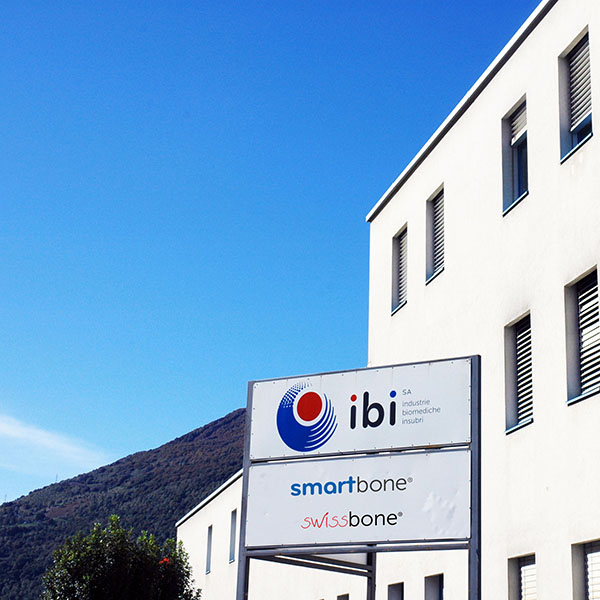CLOSE


Dear Patient,
Your doctor has chosen a bone substitues producted by the swiss company IBI as bone replacement products to be used during your planned treatment. Your doctor will discuss the planned treatment plan, the mode of action and future risks and possible therapy options with you in detail in a private interview prior to the surgery. The purpose of this FAQs is to assist you for the interview and inform you about the characteristics of the bone substitute material used.
This information should not replace the private discussion with your doctor.
SmartBone®/SwissBone® are a composite biomaterial, made of a bovine derived mineral matrix, reinforced with biopolymers and collagen fragments. Bone generally has the ability to regenerate completely, but it requires a very small fracture space or some sort of scaffold to do so. Indeed, bone grafting is possible because bone tissue has the ability to regenerate completely, as long as is provided the space into which to grow, in this case a bone graft. As native bone grows, it will generally replace the graft material completely, resulting in a fully integrated region of new bone. The biologic mechanisms, that provide a rationale for bone grafting with composite grafts and xenografts are osteoconduction (guiding the reparative growth of the natural bone) and osteoinduction (encouraging undifferentiated cells to become active osteoblasts). Only few bone grafts ensure a complete remodelling, SmartBone®/SwissBone® is among those, together with autografts (bone graft material harvested from the patient own body).
As an alternative to treatment with natural bone substitute material is for example the use of synthetic material or the possibility of autologous bone transplantation (patient’s bone transplantation). This possibility involves a second surgery site (for harvest the bone typically, retromolar, iliac crest, calvaria and chin area) and an additional surgical procedure which often is an additional painful for the patient.
As with all surgeries, a risk of allergic reactions (in this case to the collagen), swelling of the operative site, flap necrosis, bleeding, local inflammation, bone loss, infection or pain may occur also by using SmartBone®/SwissBone® . General complications can be caused through surgery itself. Despite the high result of rebuilding of bone with SmartBone®/SwissBone® , there can be no assurance that it is successful in all cases, and eventually a second treatment may be required.
Your Medical History is always very important. You are excluded in the use of SmartBone®/SwissBone® if you present a medical condition that would contraindicate surgery or interfere with the wound healing process:
Increased failure rates should be expected in patients exhibiting risk factors such as systemic disease-causing wound healing problems, heavy smoking, increased periodontal susceptibility, poor bone density and extreme atrophy and Vitamin D deficiency or high LDL or low HDL cholesterol level. Please consult your dentist also regarding any medication you are presently taking. Only in this way can it be determined whether any other application restrictions apply. Patients who have received SmartBone®, that is a xenograft, can not be blood nor organ donors.
In case you are pregnant either if there is a possibility that you may be pregnant or breastfeeding, inform your clinician since there is insufficient data in using our bone substiutes for those categories, as a safety precaution we recommend not to be treated with SmartBone®/ SwissBone®.
In order to ensure a long-term stability of your teeth or dental implant, it’s required a sufficient amount of bone. Bone plays an important role also for ensuring the esthetic appearance of your teeth and gums.
Bone loss may occur from trauma or inflammation of the gum and bone due to:
To promote bone, grow and soft tissue improvements after tooth extraction.
Bone loss at orthopaedic level may occur for the following reasons:
Bone regeneration at orthopaedic level might be needed to restore anatomy after traumatic bone loss or after surgical removal of bone tumors.

IBI SA
Industrie Biomediche Insubri SA
via Cantonale 67, CH-6805 Mezzovico-Vira, Switzerland
t. +41 91 93.06.640
f. +41 91 220.70.00